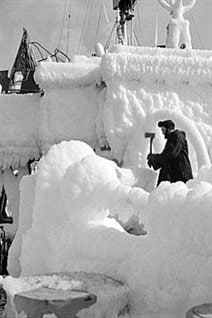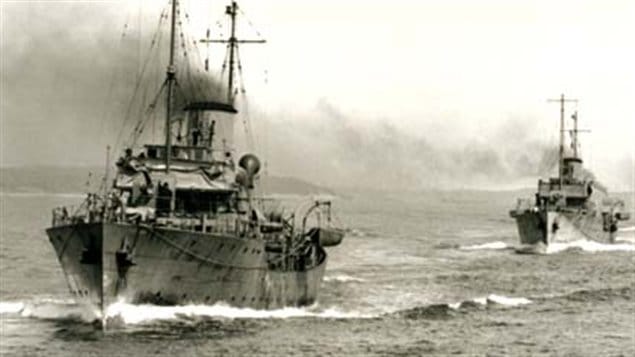Across Canada this coming Sunday veterans, remaining members of the Merchant Marine, military personel, families and dignitaries will gather at cenotaphs to remember a critical aspect of the Second World War.

They will commemorate the 70th anniversary of the Battle of the Atlantic, the longest continuous battle of the Second World War.
For years the struggle was for control of the Atlantic, and to keep open the supply lines from Canada and the US to the Allies in Europe.
Early in the war, the U-boats were exacting a heavy toll, even sinking ships on Canada’s east coast and even into the St Lawrence river. For example, between January and July 1942, some 400 allied ships were sunk to the loss of only seven U-boats.
To counter the U-boats, Canada began building a small, maneouverable and tough ship for convoy escort duty. These “corvettes” were based on the existing design of a whaling ship and could be easily and quickly built. (yes GM looked to the Canadian corvette when choosing a name for their sportscar)

The growth of Canada’s navy was remarkable. At the beginning of the Second World War, the Royal Canadian Navy (RCN) had only six ocean-going ships and 3,500 personnel. By the end of the war, Canada had one of the largest navies in the world with 434 commissioned vessels and 95,000 men and women in uniform. Canada’s industry also played an important role in the growth of our military and merchant navies. From 1941 to 1945, Canadian shipyards produced approximately 403 merchant ships, 281 fighting ships, 206 minesweepers, 254 tugs, and 3,302 landing craft.
Furthermore, Canada played an important role in directing Allied efforts in the Battle of the Atlantic. In 1943, Rear Admiral Leonard Murray was put in charge of the Allied air and naval forces in the Northwest Atlantic—the only theatre of war commanded by a Canadian during the conflict.
Originally established in 1950 as the first Sunday in October, the Battle of the Atlantic commemoration was moved a year later to the first Sunday in May to commemorate the month in 1943 when the allied navies, led by Canada, turned the tide of battle against the German submarine fleet.







For reasons beyond our control, and for an undetermined period of time, our comment section is now closed. However, our social networks remain open to your contributions.